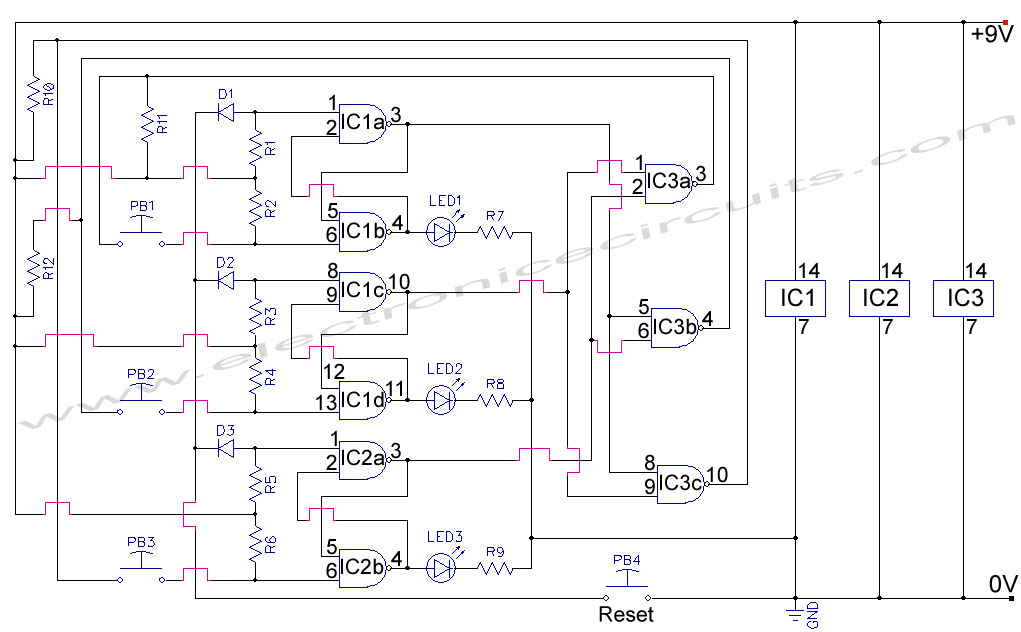
Color Sensor Circuit With CD4073 IC

This circuit illustrates a color sensor circuit diagram. The design is grounded in the principles of optics and digital electronics.
The color sensor circuit typically employs a light-sensitive component, such as a photodiode or phototransistor, to detect and differentiate colors based on the wavelength of light. The circuit may include an RGB (Red, Green, Blue) sensor, which is capable of measuring the intensity of each primary color in the light spectrum.
In a standard configuration, the RGB sensor outputs three analog voltage levels corresponding to the intensity of red, green, and blue light. These outputs are then fed into an analog-to-digital converter (ADC), which translates the analog signals into digital values for further processing.
The microcontroller, often the central processing unit of the circuit, interprets these digital values to determine the color of the detected object. It can be programmed to respond to specific colors, triggering actions such as lighting up an LED of the corresponding color, activating a motor, or sending data to a display.
Power supply considerations are crucial in this circuit. A regulated voltage source is typically required to ensure stable operation of the sensor and the microcontroller. Additionally, bypass capacitors may be included near the power pins of the components to filter out noise and ensure reliable performance.
Overall, this color sensor circuit integrates optical sensing with digital processing, allowing for versatile applications in robotics, automation, and interactive systems.This circuit shows a color sensor circuit diagram. The circuit is based on the fundamentals of optics and digital electronics. This circuit will .. 🔗 External reference
The color sensor circuit typically employs a light-sensitive component, such as a photodiode or phototransistor, to detect and differentiate colors based on the wavelength of light. The circuit may include an RGB (Red, Green, Blue) sensor, which is capable of measuring the intensity of each primary color in the light spectrum.
In a standard configuration, the RGB sensor outputs three analog voltage levels corresponding to the intensity of red, green, and blue light. These outputs are then fed into an analog-to-digital converter (ADC), which translates the analog signals into digital values for further processing.
The microcontroller, often the central processing unit of the circuit, interprets these digital values to determine the color of the detected object. It can be programmed to respond to specific colors, triggering actions such as lighting up an LED of the corresponding color, activating a motor, or sending data to a display.
Power supply considerations are crucial in this circuit. A regulated voltage source is typically required to ensure stable operation of the sensor and the microcontroller. Additionally, bypass capacitors may be included near the power pins of the components to filter out noise and ensure reliable performance.
Overall, this color sensor circuit integrates optical sensing with digital processing, allowing for versatile applications in robotics, automation, and interactive systems.This circuit shows a color sensor circuit diagram. The circuit is based on the fundamentals of optics and digital electronics. This circuit will .. 🔗 External reference





